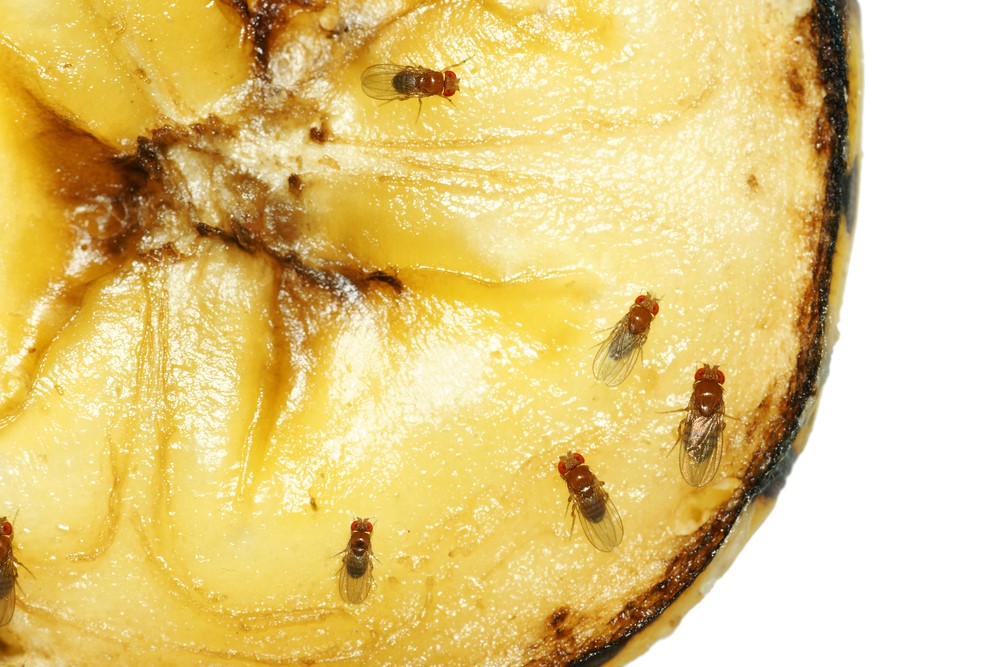The sight of flies buzzing around your business can turn customers away and put your brand’s reputation at risk. In addition to being unsightly, flies pose a serious health risk. Flies often feed or land on garbage, animal carcasses, and animal waste, and then travel to food or food preparation surfaces, potentially contaminating everything they touch. It is these behaviors that make them a risk for many types of commercial establishments.
There are two main fly categories that can be found in commercial facilities – large flies (such as bottle flies and house flies) and small flies (such as drain flies and fruit flies). Large flies develop outdoors, while small flies readily complete their lifecycle indoors. This is not an exhaustive list of flying insects you may encounter, but it includes flies commonly found in commercial facilities.
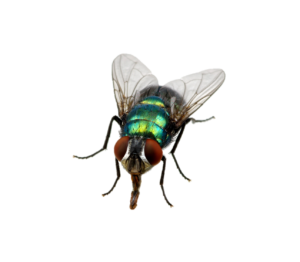 Green Bottle Fly
Green Bottle Fly
Green bottle flies are attracted to animal waste and recently deceased animals. As a result, they can transfer pathogenic bacteria between materials. For example, green bottle flies can easily carry Salmonella on their feet from dog feces found outside to meat or other foods indoors. Green bottle flies are most active on warm, sunny days.
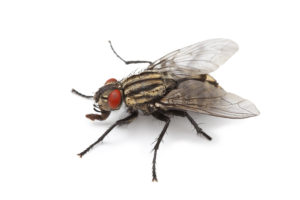 House Fly
House Fly
Despite their name, house flies can be found everywhere. These flies can fly up to 20 miles but will remain close to food sources. Adults lay their eggs in any moist warm organic material that will provide the newly hatched larvae with a food source. House flies will eat almost anything humans do, as well as some things we do not, such as animal carcasses, garbage and feces. House flies can be carriers of diseases and cause food contamination. You will likely find them around garbage cans and dumpsters.
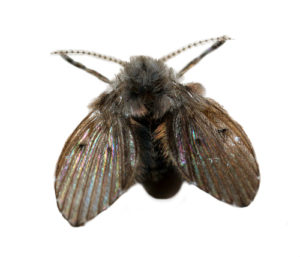 Drain Fly
Drain Fly
Drain flies feed on organic matter and sewage inside of bathroom and kitchen drains. They are often hovering around drain openings or under cabinets. Drain flies can transmit bacteria to food or food prep surfaces, posing a serious health concern.
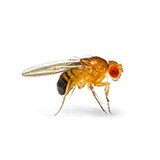 Small Fruit Fly
Small Fruit Fly
As their name suggests, small fruit flies often use fruits, particularly soft and ripe ones, as development sites. Small fruit flies can also be found feeding on decaying matter in poorly cleaned drains. Because of their ability to reproduce quickly, small fruit flies are a challenge to control and food sources must be found and remediated. Small fruit fly populations tend to be highest in summer and early fall. In addition to being a nuisance, fruit flies are potential carriers of pathogenic bacteria, making them a possible health hazard.
To protect your brand and your reputation, we encourage you to take steps to help reduce flies in and around your facility. Here are some Do’s and Don’ts to guide your prevention efforts.
Do’s
- Do keep your facility clean and free of food residue. Check underneath appliances, in corners, in between tiles, in drains, and any place where food particles can accumulate unnoticed.
- Do be mindful of moisture. Flies can develop in wet organic matter, so try to reduce that at all costs.
- Do seal all windows and doors, and repair any broken window screens.
- Do regularly clean dumpster pads and inside of dumpsters.
- Do inspect produce deliveries for any flies hitchhiking on rotting food.
- Do seal trash bins tightly and take out the garbage regularly.
Don’ts
- Don’t store trash bins right next to your facility entrances.
- Don’t leave food out in the open.
- Don’t let leaky pipes and other water-related issues go unresolved.
- Don’t prop doors open, even during warm summer weather and even if you’re using an air curtain.
If you need help with commercial fly control, let Copesan know and we will help keep your business fly free!

